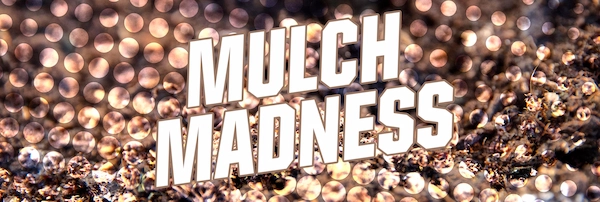Mulch Madness

As you prepare your flowerbeds this spring, you may be facing a quandary: to mulch or not to mulch? Consider these pros and cons of this common garden add-on to decide if it belongs in your yard this year.
Benefits of Mulch
- Mulch blocks the sun. This helps protect plant roots from heat damage and prevents weeds from taking hold.
- Freezing, melting and refreezing water can cause heaving, which is when shallow-rooted plants pop out of the ground. Mulch lessens this effect and can help your perennials make it to next spring.
- As the ground gradually warms up in early spring, perennials start to bloom. Mulch slows this ground-heating process so late-winter warmth doesn’t trick flowers into blooming before it’s really time.
- Using mulch slows evaporation from the soil so your plants soak up more of the water you give them. This makes mulch a cost effective investment, especially in dry climates, by saving you time, money and water.
- Mulch helps prevent the soil around your plants from eroding during heavy rainfall.
Drawbacks of Mulch
- Blocking sunlight to the soil can prevent seeds from germinating. Tip: if you’re applying mulch in the spring, wait until after seedlings have emerged.
- Plant-eating slugs and earwigs enjoy the cool, dark shelter mulch provides. Tip: only apply a thin layer of mulch 8 to 13 centimetres away from plant stems if pests become a problem.
- Slowing down the ground-heating process in spring may cause some flowers to bloom too late. Tip: rake back mulch to encourage perennials to bloom, and then recover the area once the plants are established.
- Reduced evaporation isn’t always a good thing. If the weather is wet for several days straight, the soil could remain soggy and damage your plants’ roots. Tip: rake mulch away from your plants during prolonged rainy periods to promote better drying.
Choosing and Applying Mulch
Since it’s possible to overcome pretty much every drawback of mulch in most situations, you may decide it’s right for your garden. To ensure you don’t regret your decision, choose your mulch wisely and apply it properly:
- Choose a bark mulch product to promote healthy soil. Stone and gravel are other options, but don’t expect them to improve the soil’s composition.
- Shredded bark and bark nuggets are the most popular forms of mulch. Your options include pine, cypress and hardwood trees.
- Larger pieces of bark are heavier, making them a good choice if you’re worried about your mulch blowing away in the wind or washing away in a storm.
- Dark-coloured mulch absorbs and retains heat, which is a great benefit for cold regions. Light-coloured mulches reflect heat and light, which is more desirable in hot regions.
- An 8-13 centimetres layer of mulch is plenty for most applications.
- You can apply mulch at any time of year. Just be mindful of the way it slows the ground-heating process in the spring and prevents heating in the winter.
- When comparing the cost of different mulches, always consider your longevity needs. Perennial beds deserve quality mulch that will last several seasons. Annual beds may do fine with cheaper mulch, since you need to till this patch of soil every year before replanting anyway.
If you need help preparing your garden for another growing season, please contact The Grounds Guys. We provide many landscaping services, including spring clean-up services, to help you achieve your most beautiful garden yet.
 Click to call
Click to call


